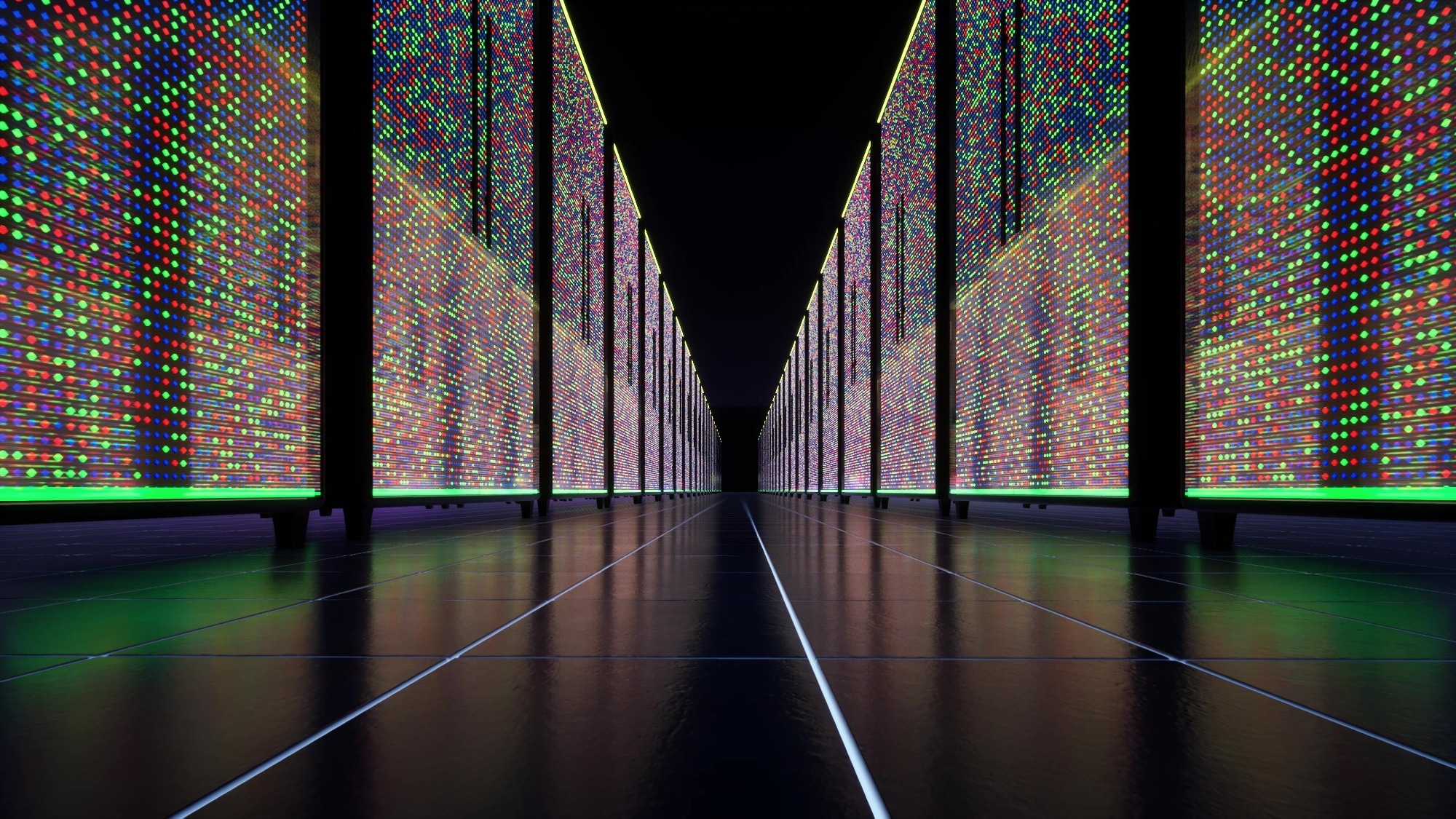A new study unveils a hybrid photonic-quantum system that transmits terabit-level data securely and efficiently, paving the way for energy-smart, quantum-resistant AI infrastructure.

Research: Quantum-secured DSP-lite data transmission architecture for AI-driven data centers. Image Credit: Volodimir Zozulinskyi / Shutterstock
The artificial intelligence (AI) boom has created unprecedented demands for data traffic. But the infrastructure needed to support it faces mounting challenges. AI data centers must deliver faster, more reliable communication than ever before, while also confronting their soaring electricity use and a looming quantum security threat, which could one day break today's encryption methods.
To address these challenges, a recent study published in Advanced Photonics proposes a quantum-secured architecture that involves minimal digital signal processing (DSP) consumption and meets all the stringent requirements for AI-driven data center optical interconnect (AI-DCI) scenarios. This system enables data to move at terabit-per-second speeds with low power consumption while defending against future quantum threats.
"Our work paves the way for the next generation of secure, scalable, and cost-efficient optical interconnects, protecting AI-driven data centers against quantum security threats while meeting the high demands of modern data-driven applications," the researchers state in their paper.
Dual Focus: Speed and Security
The system is built around two core goals: transmitting data efficiently and ensuring long-term security and reliability. To simplify data transmission, it uses a technique called self-homodyne coherent (SHC) transmission, where the transmitter sends a reference signal along with the data. This makes it easier for the receiver to decode and process signals while still maintaining high sensitivity and stability. The approach allows data to be sent at over 1.6 terabits per second while keeping power use and costs low.
For security, the system integrates quantum key distribution (QKD), which generates secret encryption keys using the principles of quantum mechanics. These keys cannot be intercepted or copied without detection, making it possible to secure classical transmissions with AES-256 encryption enhanced by quantum-generated keys. This ensures strong, long-term protection even against future quantum computers.
Multicore Fiber: Efficient Signal Separation
To handle both classical (data) and quantum (QKD) signals, the system uses multicore fibers, which contain several separate channels within a single strand. This design allows different types of signals to travel side by side without interfering, while remaining fully compatible with today's fiber-optic infrastructure.
In laboratory tests using a seven-core fiber, classical data were transmitted with the SHC system, while quantum signals were secured through QKD. The system achieved an average secret key rate of 229 kilobits per second and supported encrypted data transmission at 400 gigabits per second on each fiber core.
Real-World Performance
In a 24-hour continuous test across 3.5 kilometers of fiber, simulating real-world conditions, the network ran at an aggregated 2 terabits per second of classical data while maintaining an average SKR of 205 kilobits per second. This generated about 583 secure encryption keys every second. Over the trial, the system consumed 1,440 session keys and successfully encrypted and decrypted 21.6 petabits of classical data in real time without errors.
Photonics Meets Quantum Cryptography
This new data transmission architecture not only meets the speed requirements of next-generation data centers but also ensures strong security by combining photonics with quantum cryptography. It overcomes the bottlenecks of existing systems and operates with very low transmission losses, making it both efficient and reliable.
"By harmonizing cutting-edge photonics with quantum cryptography, we pave the way for secure, energy-efficient, and ultrahigh-capacity networks capable of sustaining the exponential growth of data-driven technologies," the researchers note.
The results demonstrated suggest a promising direction for the development of more efficient and secure data transmission systems to handle the surging demands of AI applications such as autonomous vehicles and large language models.
Source:
Journal reference:
- Xitao Ji, Wenjie He, Junda Chen, Mingming Zhang, Yuqi Li, Ziwen Zhou, Zhuoxuan Song, Hao Wu, Siqi Yan, Kejin Wei, Zhenrong Zhang, Shuang Wang, Ming Tang, "Quantum-secured DSP-lite data transmission architecture for AI-driven data centers," Adv. Photon. 7(6) 066006 (17 October 2025) DOI: 10.1117/1.AP.7.6.066006, https://www.spiedigitallibrary.org/journals/advanced-photonics/volume-7/issue-06/066006/Quantum-secured-DSP-lite-data-transmission-architecture-for-AI-driven/10.1117/1.AP.7.6.066006.full